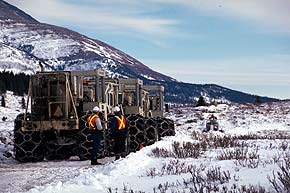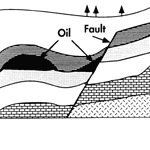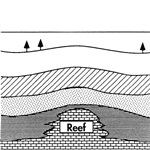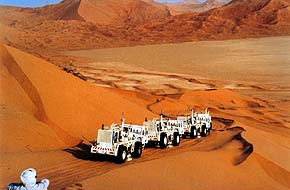The largest number of geophysicists find employment in the petroleum industry. Since most of the petroleum deposits are buried deep below the surface, petroleum geophysicists find oil and gas by building a clear picture of what is below the Earth's surface. How do geophysicists build this picture?

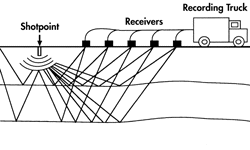 A seismic source is used to create shock waves that reflect
off the rock layers. The upcoming energy is received by the receivers, and the
signal is transmitted through the cable to the recording truck. The signal is
digitally recorded and stored on disk.
A seismic source is used to create shock waves that reflect
off the rock layers. The upcoming energy is received by the receivers, and the
signal is transmitted through the cable to the recording truck. The signal is
digitally recorded and stored on disk.
The Seismic Method
In the petroleum industry, the most common and effective method of obtaining a clear picture of the Earth's subsurface is the seismic method. This technique is based on principles of Earth physics. Shock waves set off at the surface penetrate the earth like sonar and the returning echo can be used to tell what is below.
Petroleum geophysicists usually specialize in the acquisition, processing
or interpretation of seismic data. However, most will have a good knowledge
of
the other areas, as well as geology and some engineering principles,
as there is a high degree of collaboration between the different groups.


